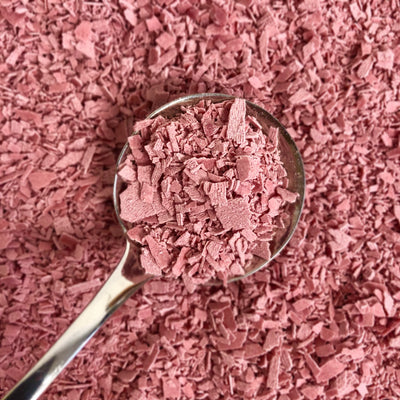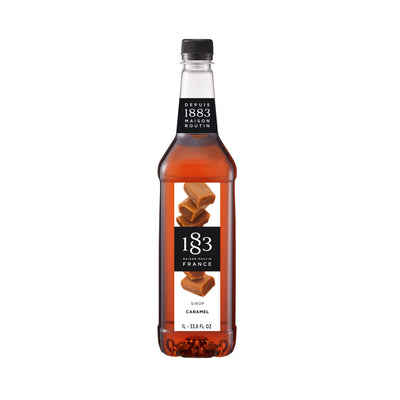The 8 best non-dairy milks to use in your coffee
There’s no doubt more and more people are moving away from dairy and substituting their milk for a non-dairy alternative to have with their coffee. There’s a number of reasons why this is the case. It could be down to lactose intolerance or as a result of a specific allergic reaction linked to dairy.
Perhaps it’s as a result of personal choice to avoid or lower the consumption of animal foods and reduce the impact on the planet. The rise of veganism and environmentally conscious consumption is a hot topic at the moment.
Or perhaps a decision has been made to choose a lower calorie and lower saturated fat option such as almond milk, hazelnut milk and rice milk, which are easier and lighter on the digestive system.
Then again it might be simply just down to the taste of the milk itself and looking for something else which they prefer the taste of.
Whatever the reason more and more people are exploring non-dairy alternatives to have with their coffee, which is why we thought we’d better have a little look at some of the milk options available and see how they work with coffee. We’ve ranked the best non-dairy milks to use in your coffee from worst to best.
THE 8 BEST NON-DAIRY MILKS TO USE IN YOUR COFFEE
#8 CASHEW MILK

(Image by @majavujic87 on Unsplash: https://unsplash.com/photos/FG29J5efMYQ)
This is usually blended milk, in other words this milk is made from cashew nuts mixed with other nut milks.
Cashew milk tends to be pretty sweet but that’s good from an overall flavour point of view. Handily it does have a less nutty taste too than say hazelnut milk which makes it a good bet for bringing out the hidden depths of some speciality coffees and not overwhelming your palate.
However cashew milk falls down when it’s heated past 60°C and curdles. The foam produced doesn’t hold and isn’t dense. It’s also more limited in choice in terms of the brands available on the market which is why this makes number 8 on our list.
Our rating: 2/10
#7 RICE MILK

(Image by @mggbox on Unsplash: https://unsplash.com/photos/zXNC_lBBVGE)
Yes, you guessed it. Rice milk is actually derived from rice.
Rice milk is low in fat, fairly healthy and great for those wanting dairy free milk. That said, it’s not the best choice for making cappuccinos and lattes. Rice milk has a low level of protein, which means when it’s heated it struggles to foam. You won’t be enjoying the most luscious lattes and cappuccinos with this milk; we found it quite thin and watery.
If you want to persevere you will have to source a rice milk which has added protein. That will get the milk foaming better but kind of defeats the object of using this milk in the first place. However one of the redeeming factors of rice milk is its neutral taste, which means it works well as a white americano.
Our rating: 3/10
#6 COCONUT MILK

(Image by @ikredenets on Unsplash: https://unsplash.com/photos/E95Lpkg-bgc)
Thick and creamy, coconut milk is a staple across the world of food. We use coconut milk in curries, stews and all sorts of savoury dishes. Coconut milk has a decent amount of protein. That’s just what’s needed to help us create those all-important textured coffees.
Coconut milk isn’t to everyone’s taste. The coconutty taste can be somewhat overwhelming. It also has a habit of curdling and separating when you heat it past 60°C.
Our rating: 4/10
#5 SOY MILK

(Image by @picoftasty on Unsplash: https://unsplash.com/photos/3d4VRbKaYBE)
Soy milk is pretty much available everywhere. It became popular in the 1980s and has endured to this day. However it’s not as tasty as some of the other milks on our list when we’ve compared to other dairy free milks. The profile can hide some of the finer flavour characteristics found in speciality coffee, which is why we’ve got it in the middle of our list.
From an allergy point of view soy milk ticks most boxes, which makes it a great alternative non-dairy milk to use in coffee. Handily it’s got a pretty good nutrient profile, which makes it a good bet for steaming and foaming, leaving you with a rich foam.
However, that said, it really isn’t up to the job when it comes to latte art because it can simply curdle with espresso if not prepared properly and separate in your drink. This can make it taste oily and you wouldn’t want lumps and bumps floating in your coffee.
Our rating: 5/10
#4 OAT MILK

(Image by @kaffeemeister on Unsplash: https://unsplash.com/photos/SAsyPsQAim8)
Oat milk is made from oats, water and a little oil with good protein profile. It produces a decent reasonably long lasting foam, handy for latte art and its good for the health conscious too as it’s got a high fibre content and low fat content. Oat milk is good for a healthy digestive system as well as decent foam on your latte.
Being sweet and creamy, oat milk has more calories than some of the other alternatives on our list as it’s naturally higher in sugar. The protein content is also lacking compared to our top 3 non-dairy milks which means the foaming isn’t as good as our top 3, which is why it only places at number 4 on our list.
Our rating: 7/10
#3 ALMOND MILK

(Image by @awilx6 on Unsplash:https://unsplash.com/photos/lAueE1Zf9tY)
Superfood central, that’s your average almond. Taking its spot at number 3 on our list, almond milk is jam packed full of nutrients without the saturated fat or cholesterol.
Almond milk is perfect for the health conscious among us but when it comes to coffee the nutty taste can mask the more subtle flavours found in many speciality coffees.
Despite that almond milk has a good protein content and similar to dairy milk it can hold its foam for a long time. It’s also a good base for latte art with the silky smooth foaming it leaves on top of the mug.
Our rating: 8/10
#2 HEMP MILK

(Image by @ninjason on Unsplash: https://unsplash.com/photos/Z-hvocTfR_s)
Let’s be honest. How many of you expected to see hemp milk at #2?
Hemp milk may be a left field choice but what can we say, it works wonderfully well with coffee.
Despite what you may think there aren’t any psychoactive compounds present in the milk which means that your friends won’t be peeling you off the ceiling after having a coffee with this milk.
Hemp milk has high protein content. It steams well and retains foam well. It also adds a slightly nutty taste to the drink but doesn’t overwhelm it in the same way that other nut based milks do on our list.
Overall we think it’s a great option for a non-dairy milk to use in cappuccinos and lattes although it may taste a little thinner than the dairy alternative.
Our rating: 8.5/10
BUT, WHAT’S THE BEST NON-DAIRY MILK TO USE IN YOUR COFFEE?
#1 PEA MILK

(Image by @timbar on Unsplash: https://unsplash.com/photos/29LPbVGfnPI)
Taking the top spot in our list is pea milk. But, first things first… remove the image of green garden peas from your mind. Pea milk is made using golden peas.
Handily, pea milk is good for you too because it’s got high nutrient and vitamin content and its good protein profile. What’s more it doesn’t have that chalky background taste that soy and other non-dairy milks have either.
The texture of pea milk is much closer to dairy than the other milks on this list. Moreover because of the high protein levels it steams well and produces thick, long lasting foam. Pea milk is also good for latte art, bonus!
We think it’s the best non-dairy milk to use in your coffee.
Our rating: 9/10
OUR THOUGHTS AFTER TRYING ALL OF THESE NON-DAIRY MILKS WITH COFFEE
We found that the overall latte art leaves a lot to be desired when using most of these milks. If you go over 60°C you may end up with milk curdling and the odd lumps and bumps floating about in your coffee so they aren’t the best for a true barista experience. Non-dairy milks aren’t an exact match to dairy so most of the milks tend to taste a little thin and watery and typically have a nutty profile to them which can take away from the complexity of subtle coffees.
However we’ve pulled out the stops and discovered little hacks to help prepare non-dairy milk to use in your coffee
- Let your coffee cool down a little before adding the milk then it won’t separate in your drink.
- Spend a little time doing some research and use a less acidic coffee, ph. values play a big part in plant-based milks splitting. We recommend darker roasts and coffee blends with a Robusta base to help avoid this issue.
- Turn things on their head and add the coffee to the milk rather than the other way round.
- The two main things that affect plant-based milks in coffee are temperature and acidity. Apply a little science to get those things right and you will end up with a decent dairy-free brew!
THE 8 BEST NON-DAIRY MILKS TO USE IN YOUR COFFEE
| Milk Types | Flavour Notes (imparted to drink) | Foaming ability | Average Calories Per 200ml serving* | Our Rating |
| Cashew | Sweet, mild nutty flavour | Poor | 50 | 2/10 |
| Rice | Neutral, Thin | Poor | 100 | 3/10 |
| Coconut | Coconutty, thick and creamy texture | OK | 62 | 4/10 |
| Soya | Smooth, Nutty, Neutral, Creamy | Great | 78 | 5/10 |
| Oat | Sweet, creamy | OK | 90 | 7/10 |
| Almond | Nutty, Silky | Great | 48 | 8/10 |
| Hemp | Mild nutty flavour, thin texture | Great | 69 | 8.5/10 |
| Pea | Smooth, neutral flavour | Great | 58 | 9/10 |
PAIR YOUR FAVOURITE NON-DAIRY MILK WITH A COFFEE
CLICK HERE TO SEE THE FARRER’S RANGE
*Calories ref: https://www.diabetes.org.uk/guide-to-diabetes/enjoy-food/eating-with-diabetes/diabetes-food-myths/milks





